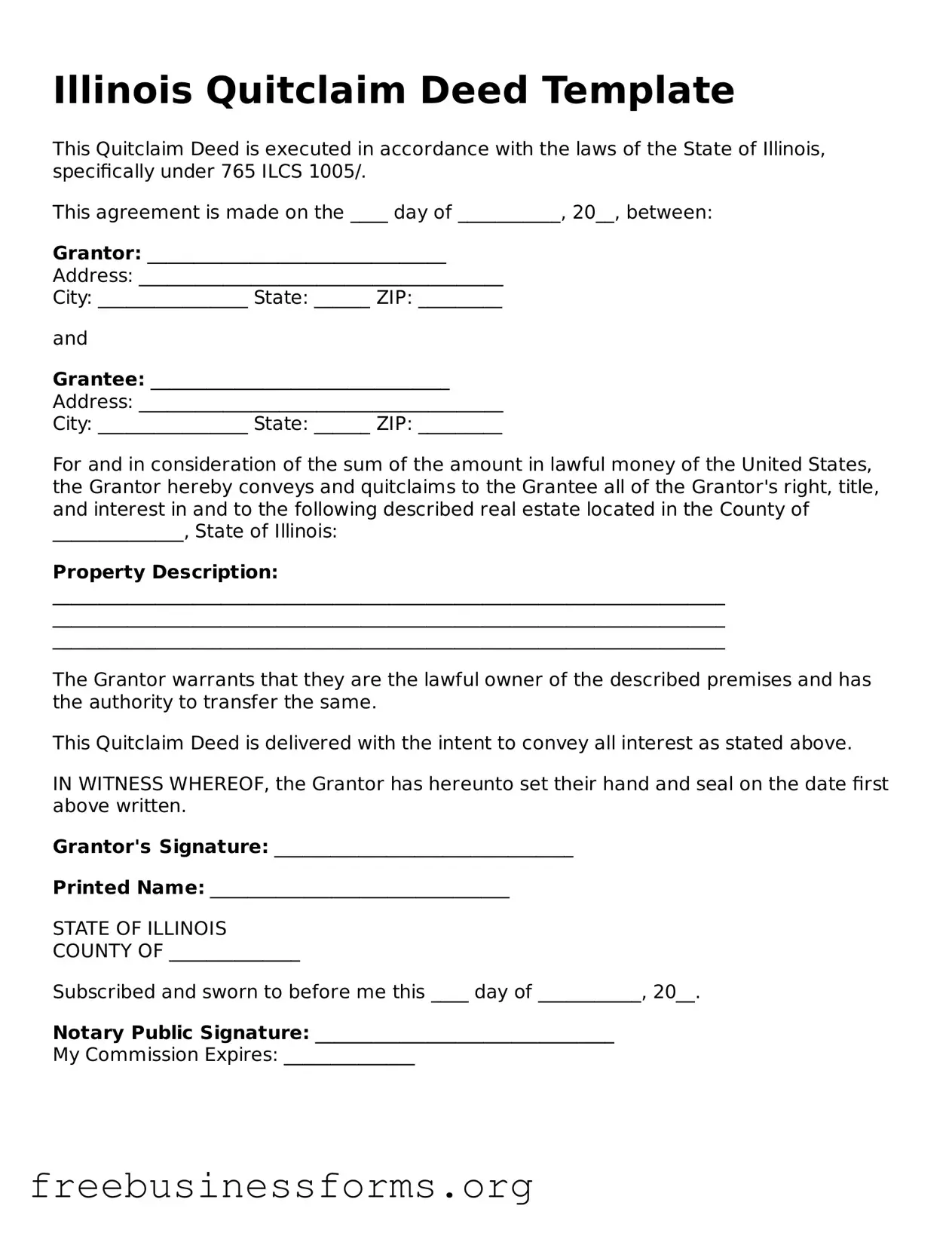Illinois Quitclaim Deed Template
This Quitclaim Deed is executed in accordance with the laws of the State of Illinois, specifically under 765 ILCS 1005/.
This agreement is made on the ____ day of ___________, 20__, between:
Grantor: ________________________________
Address: _______________________________________
City: ________________ State: ______ ZIP: _________
and
Grantee: ________________________________
Address: _______________________________________
City: ________________ State: ______ ZIP: _________
For and in consideration of the sum of the amount in lawful money of the United States, the Grantor hereby conveys and quitclaims to the Grantee all of the Grantor's right, title, and interest in and to the following described real estate located in the County of ______________, State of Illinois:
Property Description:
________________________________________________________________________
________________________________________________________________________
________________________________________________________________________
The Grantor warrants that they are the lawful owner of the described premises and has the authority to transfer the same.
This Quitclaim Deed is delivered with the intent to convey all interest as stated above.
IN WITNESS WHEREOF, the Grantor has hereunto set their hand and seal on the date first above written.
Grantor's Signature: ________________________________
Printed Name: ________________________________
STATE OF ILLINOIS
COUNTY OF ______________
Subscribed and sworn to before me this ____ day of ___________, 20__.
Notary Public Signature: ________________________________
My Commission Expires: ______________
